
A Glimpse of the Future of High-Tech in Shenzhen, China
Last September, I spent a wonderful week in Shenzhen, China where Thoughtworks has just opened a new office. That city is making exhilarating progress in everything from Internet of Things to next-generation retail technology and maker spaces.
Here are 10 observations from my visit:
1. Drone maker DJI could be China’s first big breakout high-tech brand
China now has several brands well-known throughout the world - Xiaomi, Haier and Huawei, to name a few. But DJI could be the biggest of the lot, and certainly the most innovative. Their (civilian) drones are the most advanced in the world, finding applications in everything from photography to agriculture and logistics. To describe just one application, their Ronin platform uses three motors to stabilise the attached professional-grade camera when moving vigorously. All aspects of the Ronin drone can be remotely controlled through a tablet or smartphone, enabling movie-makers to shoot cinema-quality footage in zones that are too high, distant or dangerous for human beings to go to. In just a handful of years, DJI has bootstrapped its way to $10b in market capitalisation and nearly $1b in global sales. During our visit to their headquarters, we sensed plenty of the energy, creativity and swagger that allows them to do such astounding things.

[DJI drones. Shenzhen, Guangdong, China. September 2015.]
2. Can't throw a stone in Shenzhen without hitting a vibrant hardware start-up
Hardware start-ups are everywhere in Shenzhen and they’re remaking the world in weird and wonderful ways.
For every DJI (see above) that has received worldwide attention, there are a hundred that are enormously successful in the Chinese local market but are unknown outside. One outstanding example is iBoxPay, a vendor of smart point-of-sale systems for retail stores. Through their iPad based systems (among others) they help hundreds of thousands of small Chinese shops take in billions of yuan in transactions. But their best product yet comes out shortly. We were treated to a sneak preview - a handheld system with a card-reader scanner, printer and full mobile phone that retails for as little as 170 USD. The phone is an Android-based open system, so it’s possible to build all sorts of value-adds on top of it: personalised recommendation engines, product comparison systems etc.
Yet another start-up, Meirenji makes nifty people-counters based on identifying head-and-shoulder patterns. Their product is already installed at many retail stores, malls, companies and other high-traffic areas. Next on the agenda? A version of the device that will allow them to uniquely identify individuals. Imagine the implications that could have for retailers who want to personalise the in-store experiences of shoppers.
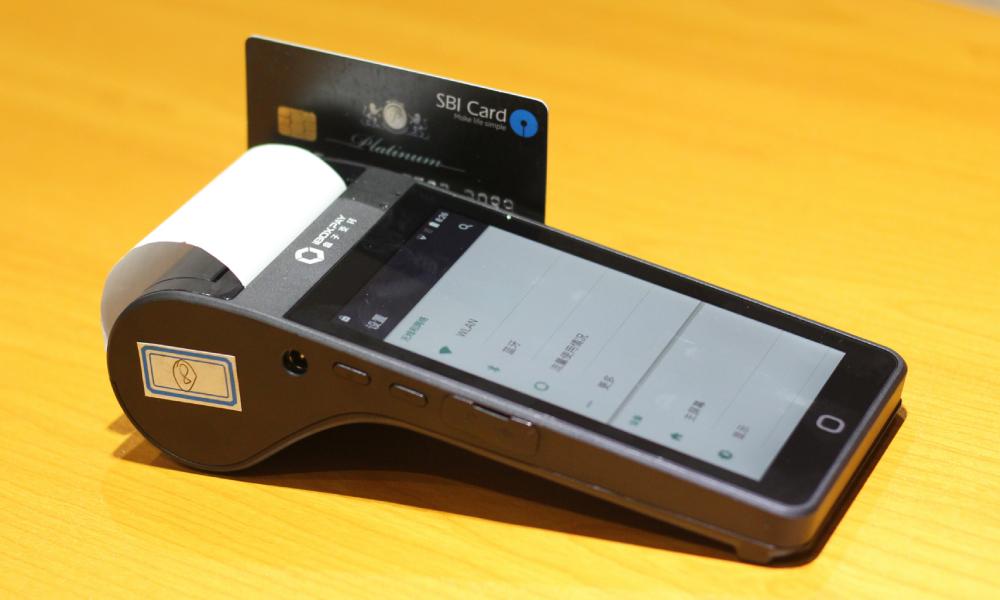
3. The future of the retail store is giant, transparent, interactive displays
The week I spent in Shenzhen also saw the launch of Apple’s set-top box. Tim Cook declared, “the future of TV is apps”. That may or may not be true, but it certainly felt that in the near future, retail stores and other physical spaces will enhance the user experience with all manner of giant interactive displays. Three examples:
- Several start-ups are building fully transparent displays that could turn into touch-screens when desired. Jewellery stores are using them to let shoppers see their wares clearly first and then get more information about the products on that very display.
- Yet more start-ups are making magic mirrors that could be used in gyms to provide remote lessons, at salons and fashion stores to let consumers “try on” styles etc.
- Many malls have superbly-designed touch-screen kiosks to help shoppers navigate stores, see offers, etc.
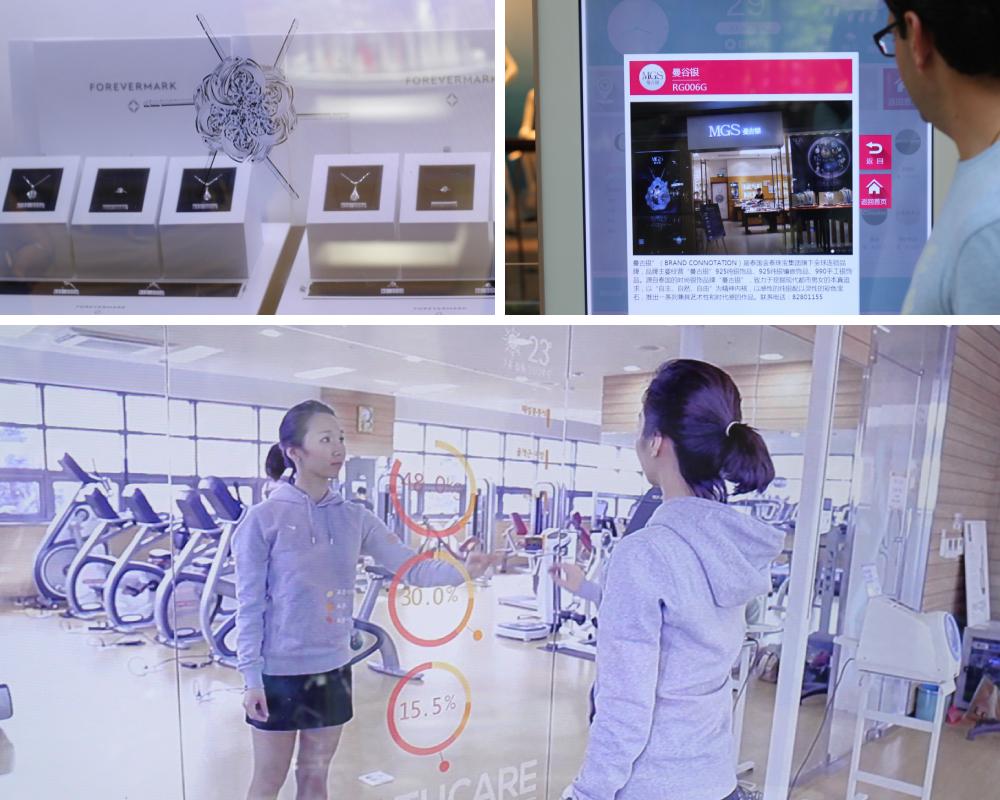
4. “There’s an (Internet-connected) thing for that”
Move over, “there’s an app for that”. At etail start-up KnewOne’s office, there were enough types of Internet-connected devices to make my (rather old) head spin. Aside from the usual fitness trackers and wifi routers, there were connected remote controls, networked thermostats and self-stirring coffee mugs. Also Internet-enabled aroma humidifiers, whatever they may be. Talk about the consumerisation of IT! KnewOne is also notable for its novel approach to business - it puts community before sales.
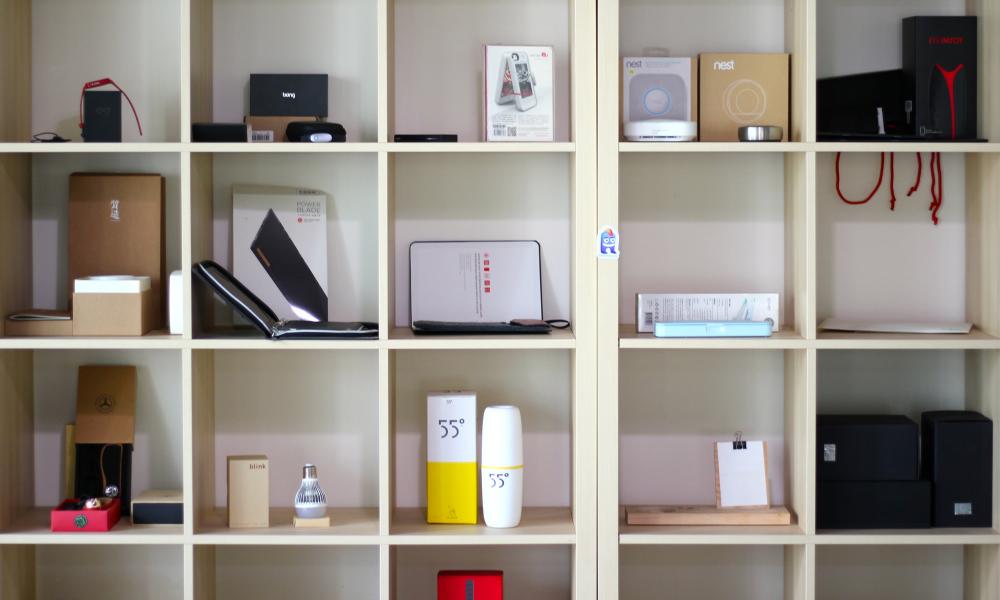
5. The ‘maker movement’ is redesigning the modern technology workplace
With generous help from the Government, makerspaces are springing up all over China, and in Shenzhen in particular. As good as their output is (see observations above), their work environments are even more remarkable. Radically open and inviting, they have all the toys a geek might need to get her creative juices flowing - 3D printers, art, miniature cars, hardware, open source components... you name it. It’s no wonder that China’s move up the value chain from contract manufacturer to design powerhouse has been so breathtakingly fast.
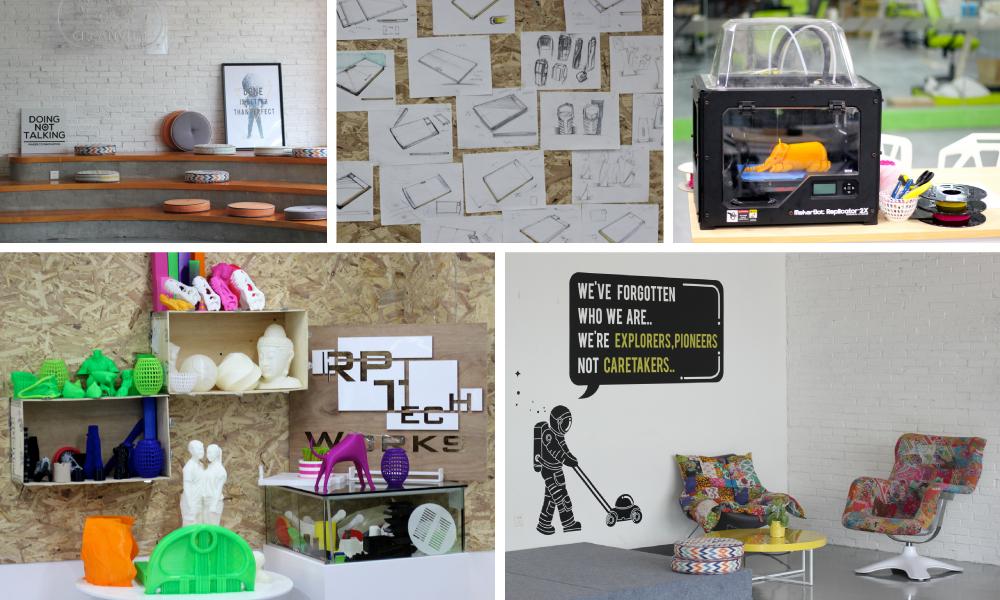
[Maker spaces. Shenzhen, Guangdong, China. September 2015.]
6. China is extending its traditional strengths in contract manufacturing
If makerspaces are about cutting-edge design, the SEG store and the HuaQiangBei electronic market are about contract manufacturing. Even a brief visit is enough to show that China is extending its lead into modern devices like wearables. Both locations showcase a dizzying array of Internet-connected watches, health devices, fitness trackers etc. that they can OEM on demand. Choose a product, specify the quantity, hand over the logo, and viola!
It is said that by 2017 we’ll each have five Internet-connected devices. A visit to Shenzhen’s contract manufacturing centres has made me think that even that astounding number may be an underestimate.
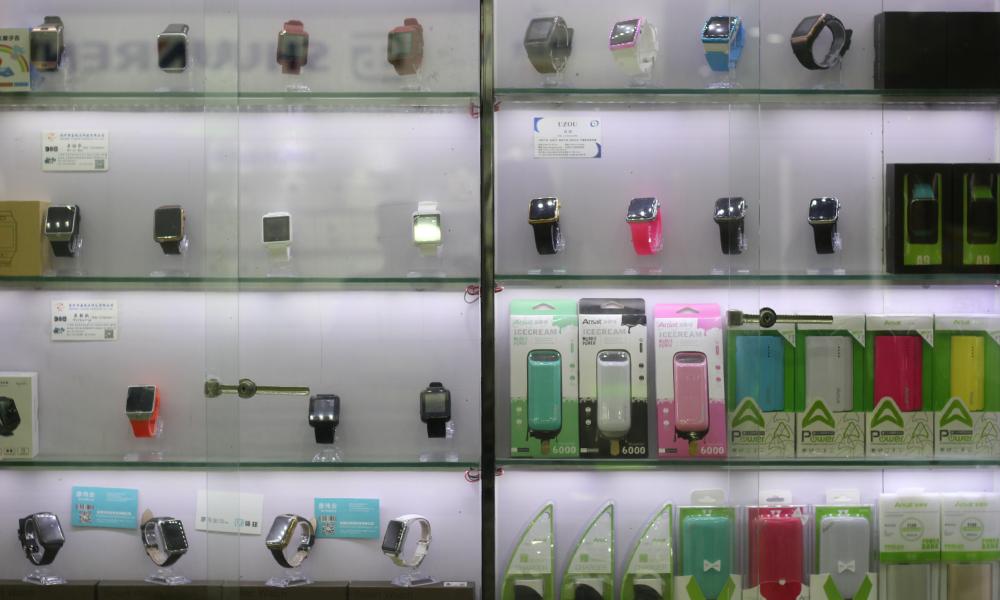
7. QR codes are everywhere… and used heavily by China’s incredibly tech-savvy population
In most parts of the world, QR codes are given up for dead. The blinking VCR clock of the 21st century, leading technology commentators have called them. Clearly they’ve not been to Shenzhen, where the little black and white squares are ubiquitous... on cars, billboards, screens, everything. There is even an eccentric company offering perks to employees who tattoo the company QR code on their bodies.
It helps that the Internet giants WeChat and Alibaba have put their weight behind the QR code. Some are branded with company logos, some are used to fight counterfeit goods. In many cases, users seem to find them highly useful in accessing websites, online offers, etc.
A key reason for their popularity might be that most people in China (unlike in the West) access the Internet from their phones rather than desktops. There could be a lesson in there for other emerging markets, where similar patterns of Internet adoption prevail.
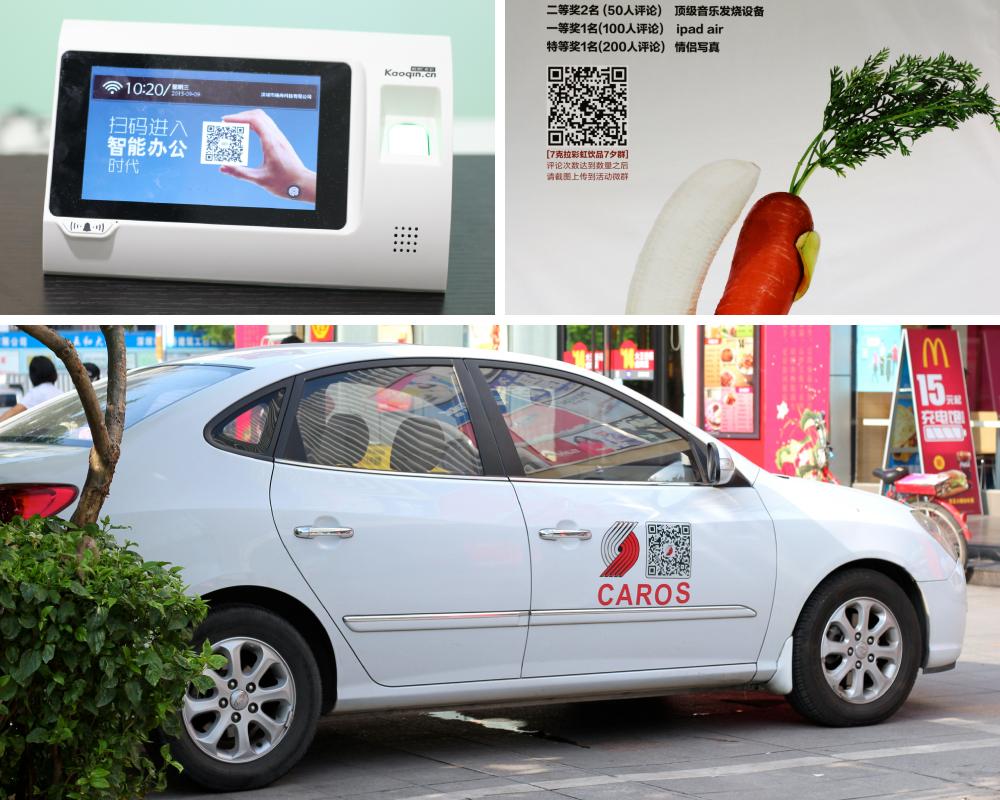
8. China’s Internet platforms are holistic, not super-specialised
It’s common in the English-speaking parts of the world to refer to WeChat as “China’s WhatsApp”. That’s true, but only in the sense that Leonardo da Vinci was a painter: it understates the reality vastly. WeChat helps their customers do everything - chatting of course, but also shopping, banking and gaming. We saw people pay for drinks at a vending machine using WeChat, and also transfer funds to each other. WeChat makes it impossible (and very often unnecessary) for users to leave its platform.
WeChat’s business philosophy is in fact indicative of that of all the big Chinese Internet platforms. Alibaba for example, aims to own the entire “stack” - eCommerce, marketplaces, Cloud, movies, logistics, the works.
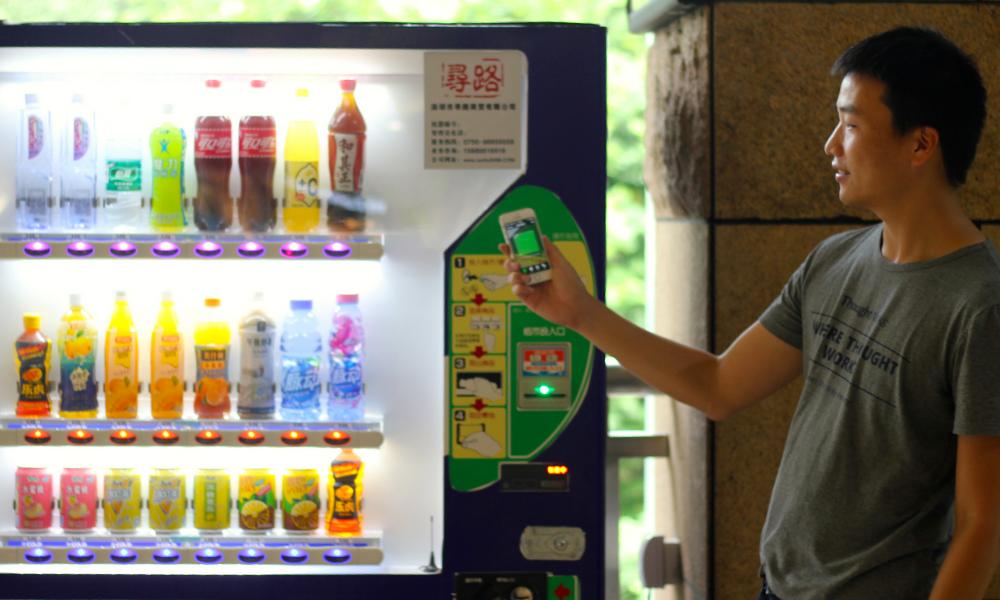
[Paying with WeChat. Shenzhen, Guangdong province, China. September 2015.]
9. The factory workers of Shenzhen need our solidarity
The good people of Shenzhen make things that enable us to earn our living, and toys that enrich our lives. But unfortunately the shop-floor workers themselves have benefited precious little from Shenzhen's growth from a sleepy fishing village in the '80s to the powerhouse it is today. There have been many suicides and gruesome stories of people jumping off factory buildings because of horrible work conditions. There are social and alienation problems impacting factory workers all over China.
Shenzhen is ground zero for world electronics—Foxconn, the world’s largest manufacturing contractor, and Huawei, the world’s largest telecom equipment maker, are both headquartered there. As we drove past their gargantuan campuses, it was impossible not be haunted by the spectre of the injustices of our global economic system. Of course, every major manufacturing city in the developing world faces these problems.

10. An interesting clean technology experiment
Like every major city in China or India, Shenzhen has had its challenges with pollution and air quality. But the city seems to be taking some steps to curb the problem. The Government restricts car sales, the public transport system is very good and the city is full of parks and lanes with giant trees.
One of the most enterprising clean technology ideas we saw are the hybrid street lights on trial in the city. These have three power sources - traditional grid-based electricity, but also solar and wind-powered options.
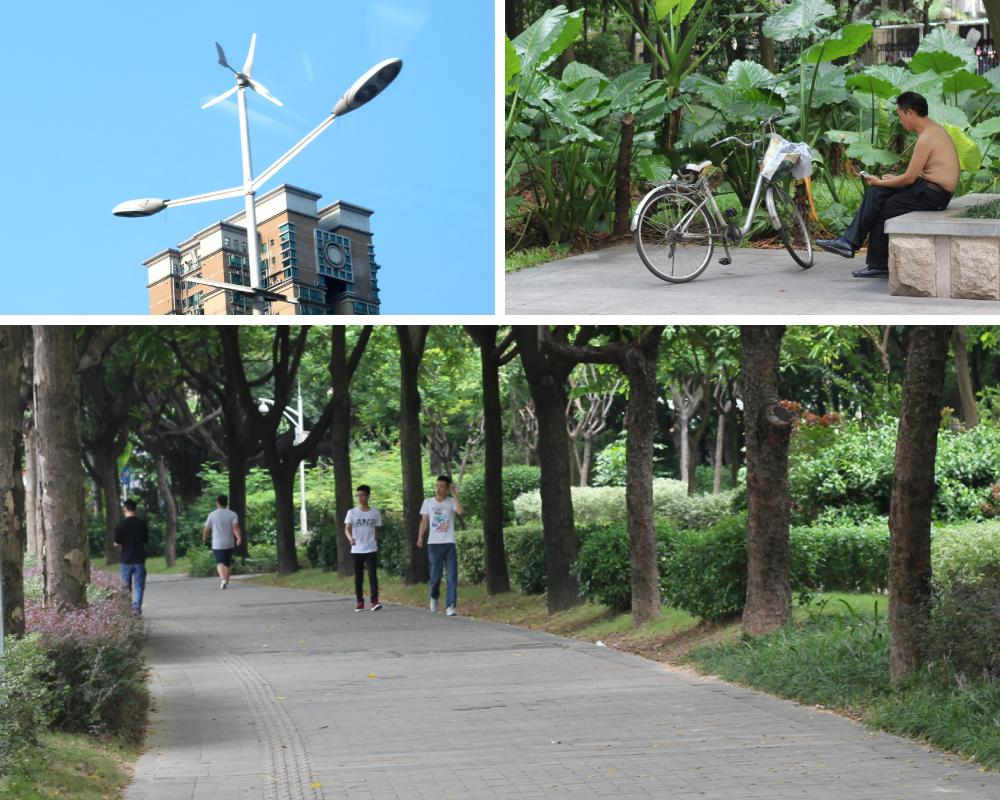
Disclaimer: The statements and opinions expressed in this article are those of the author(s) and do not necessarily reflect the positions of Thoughtworks.














